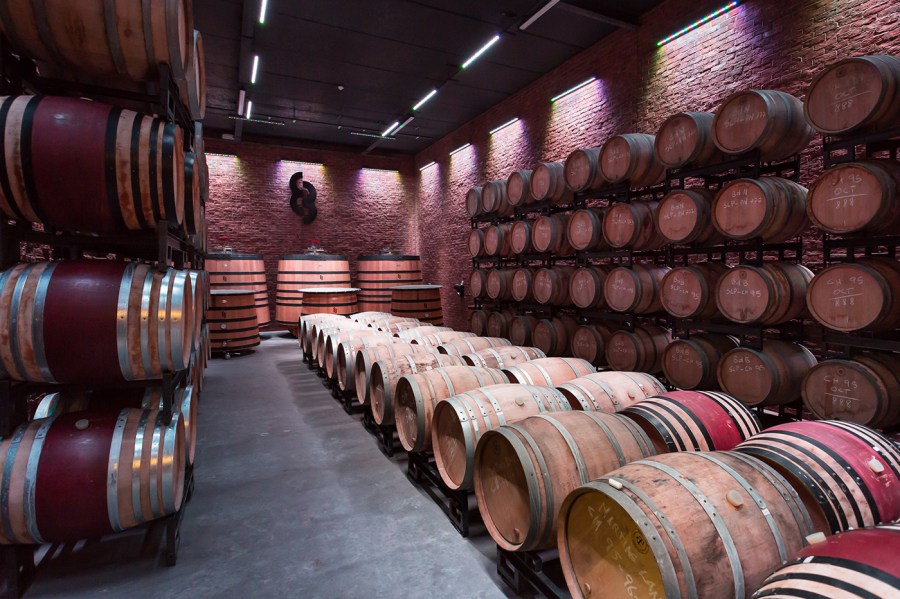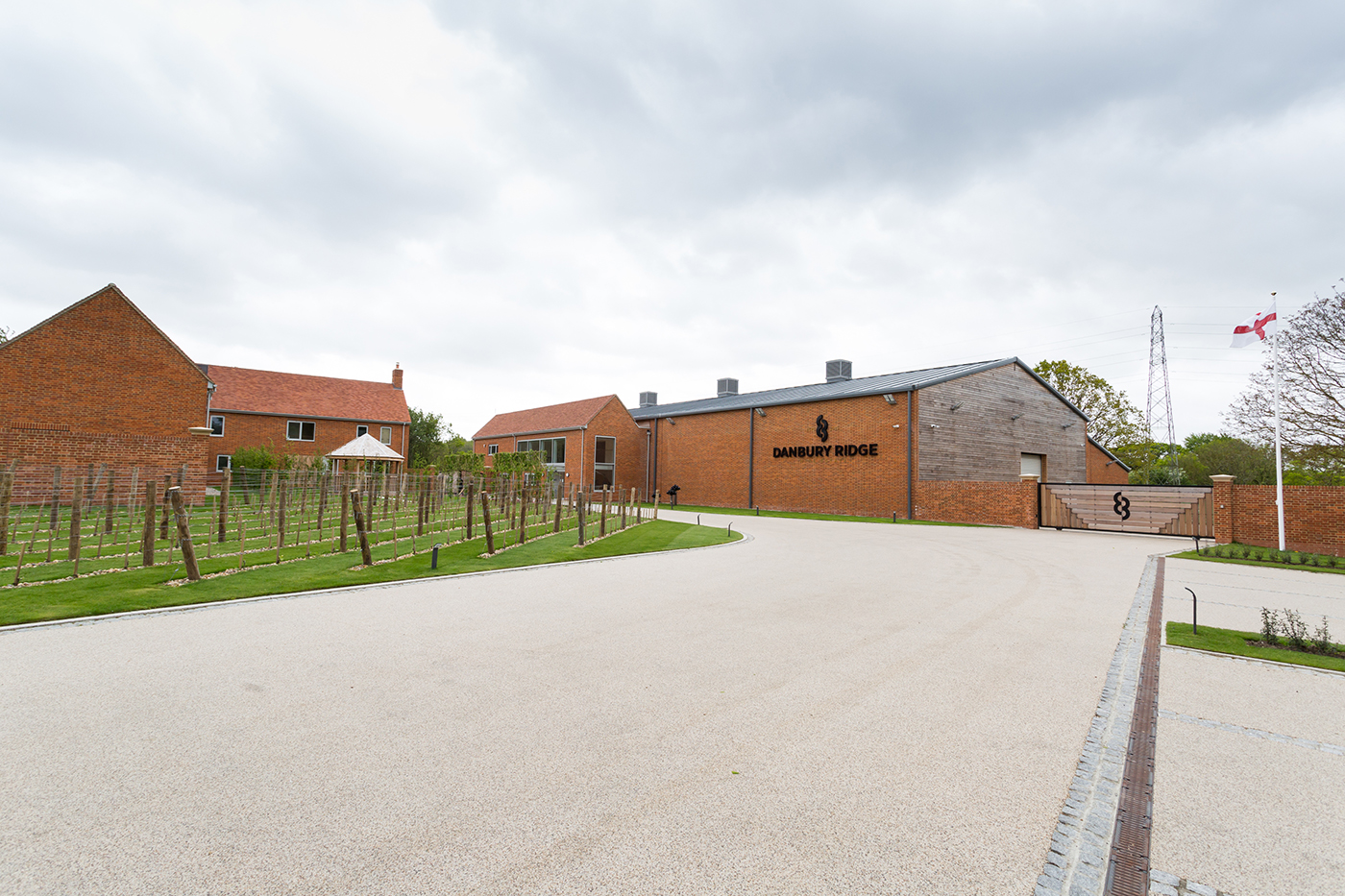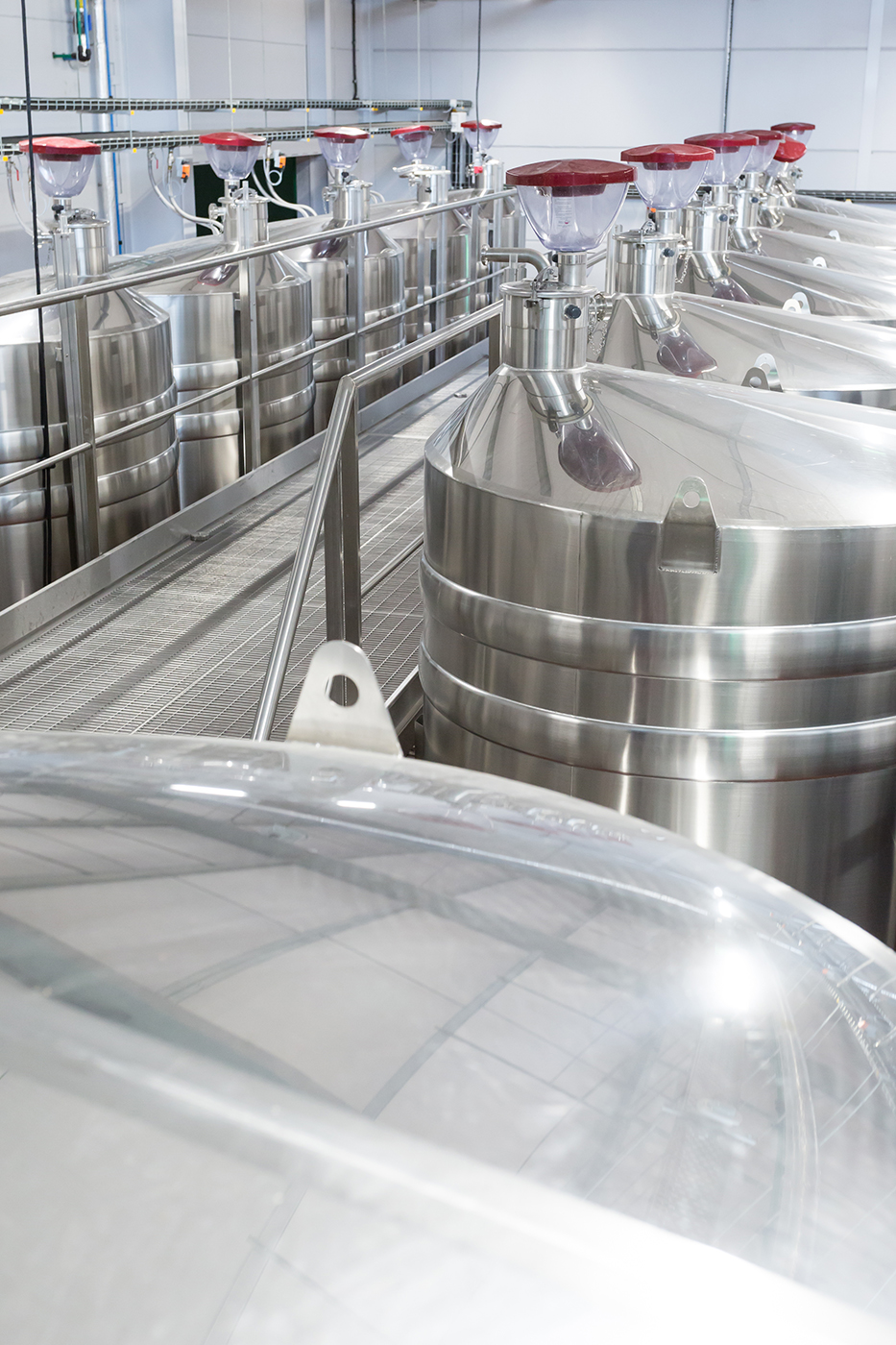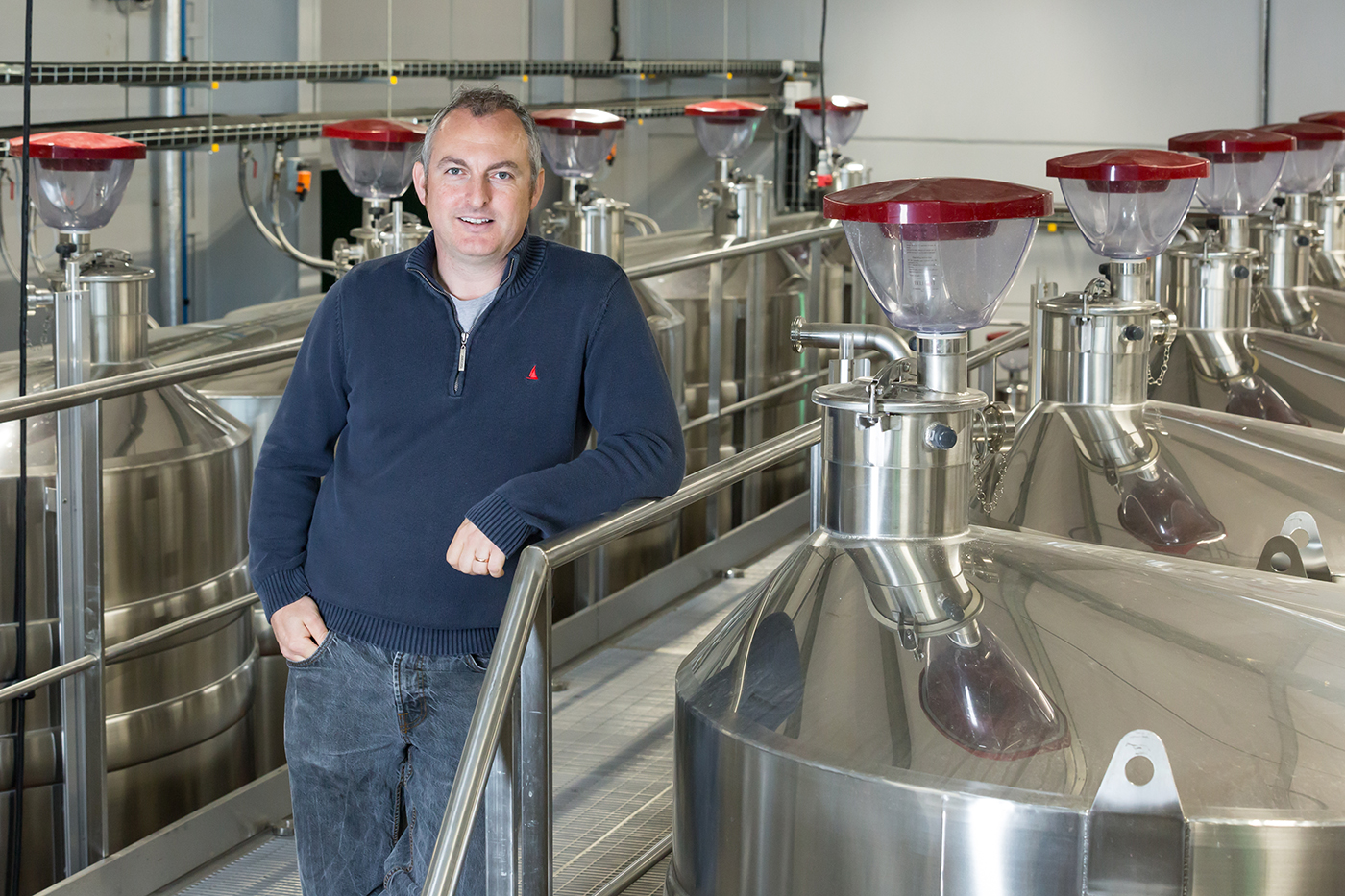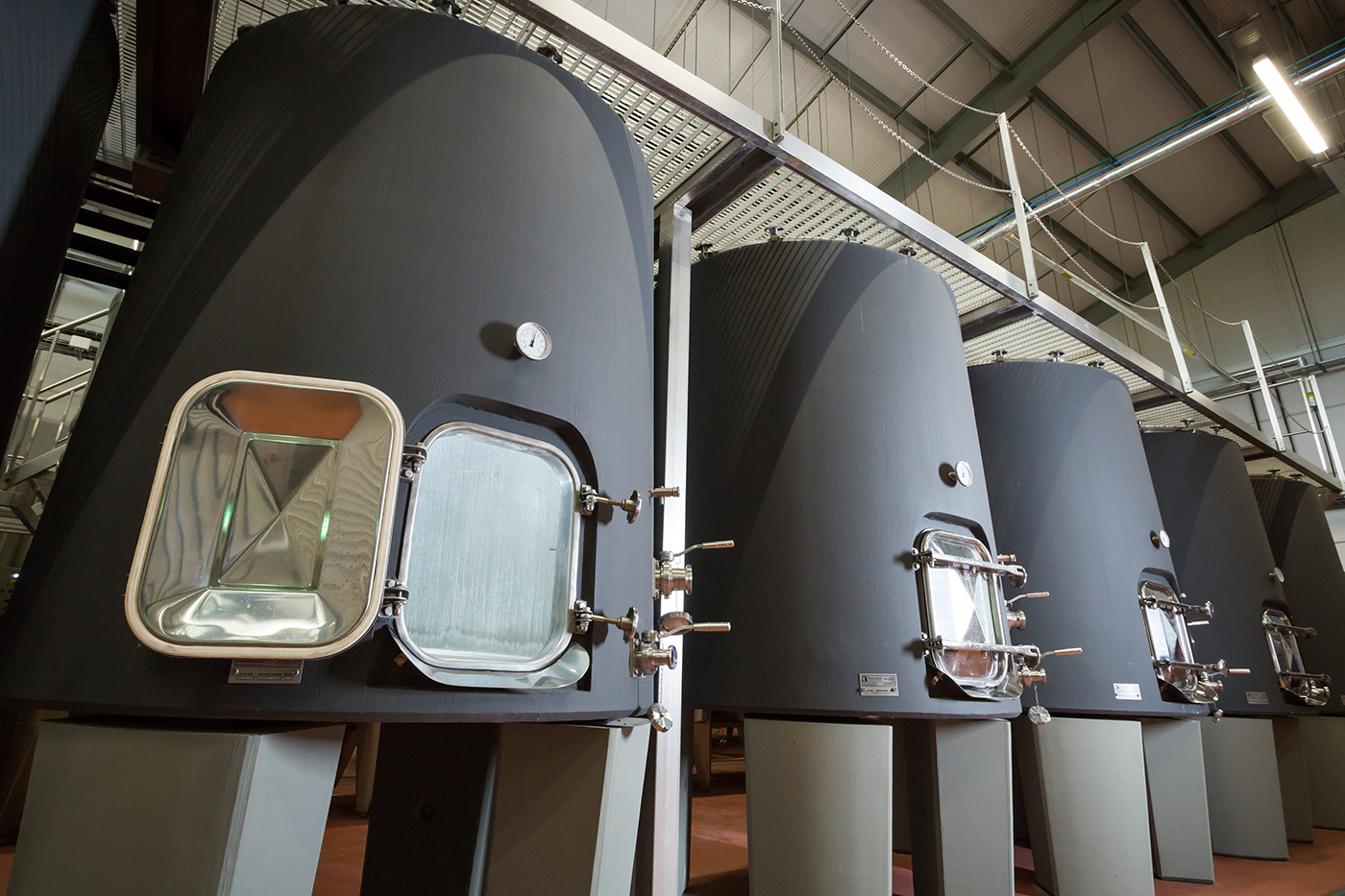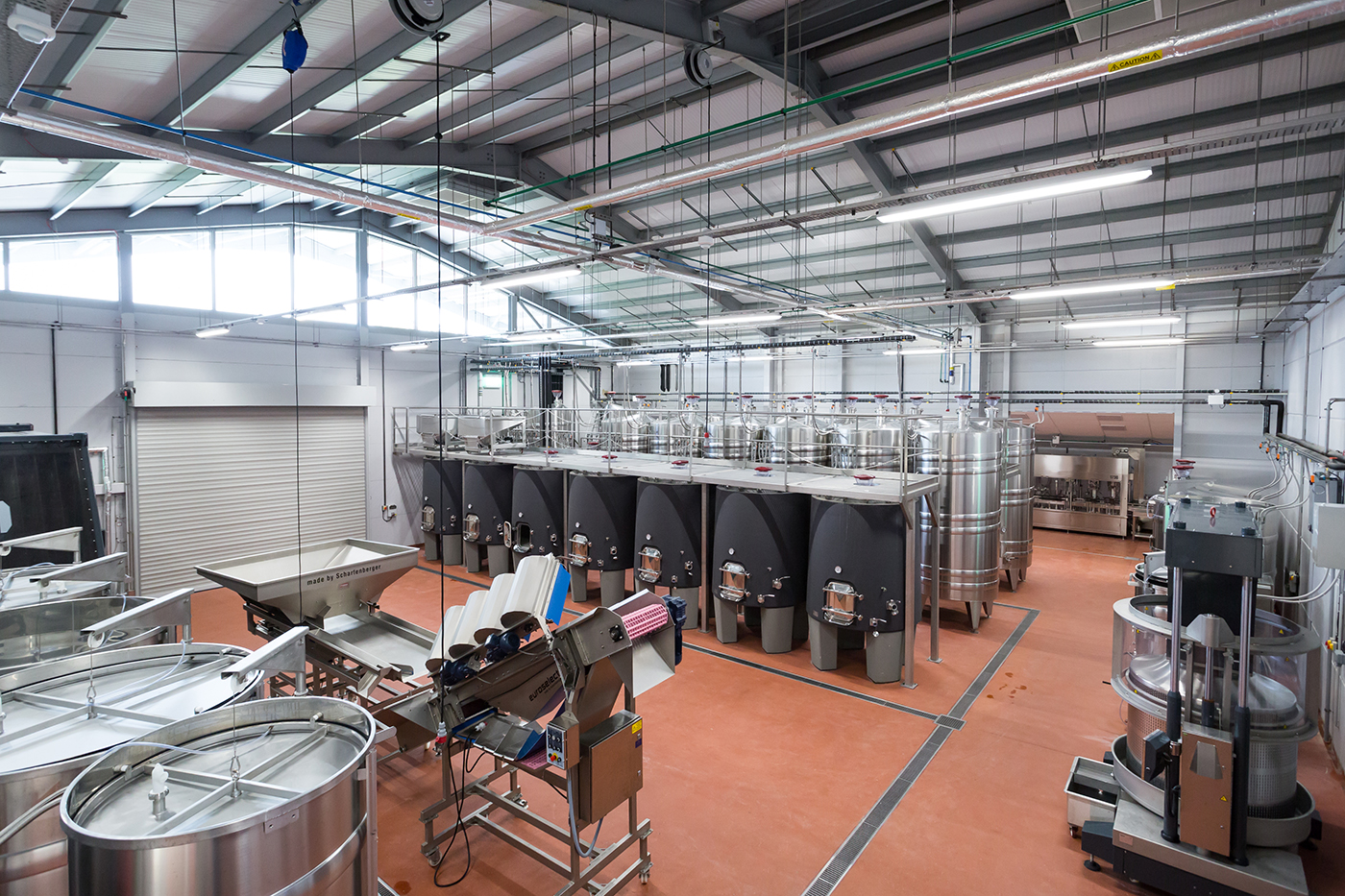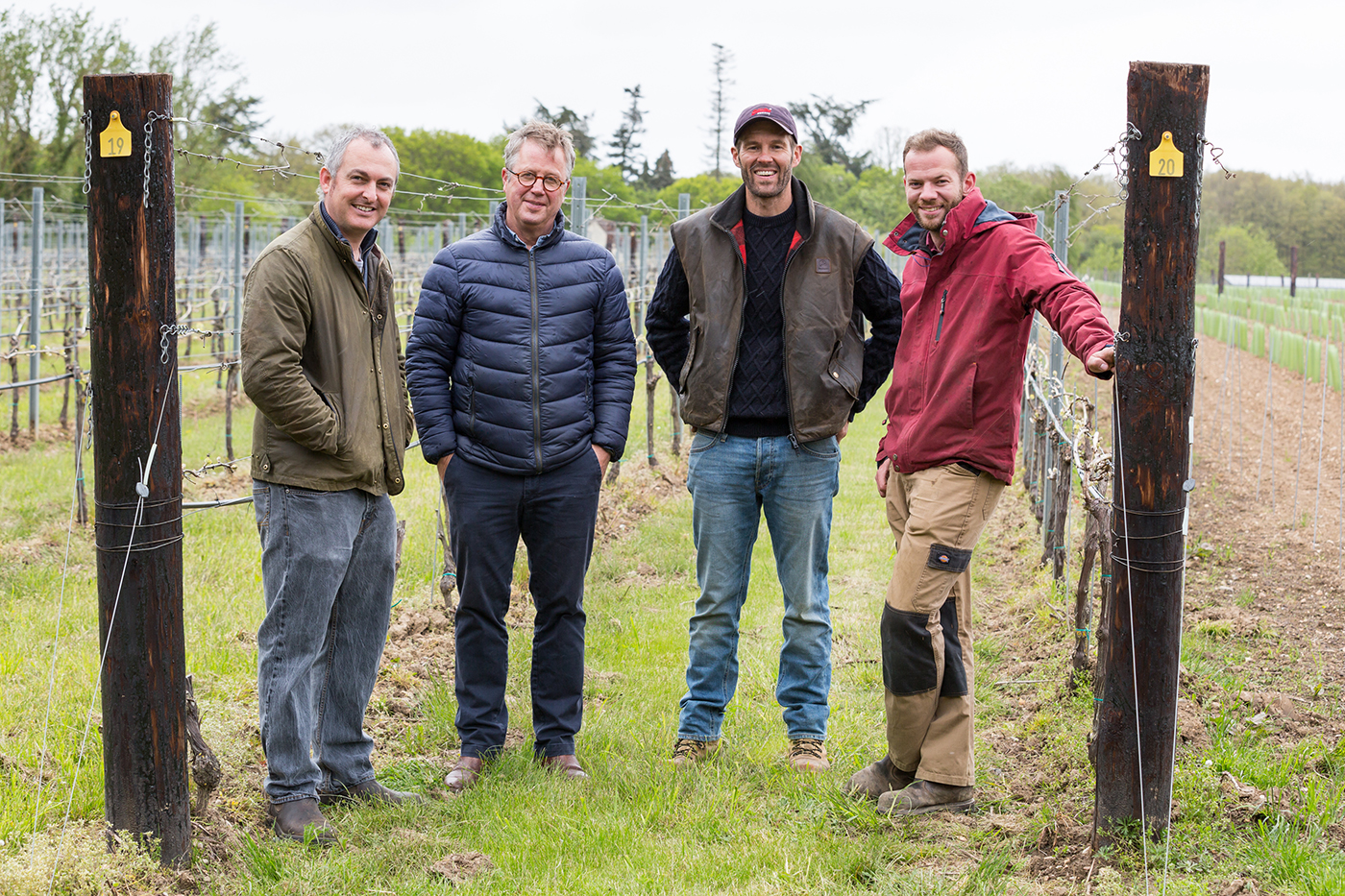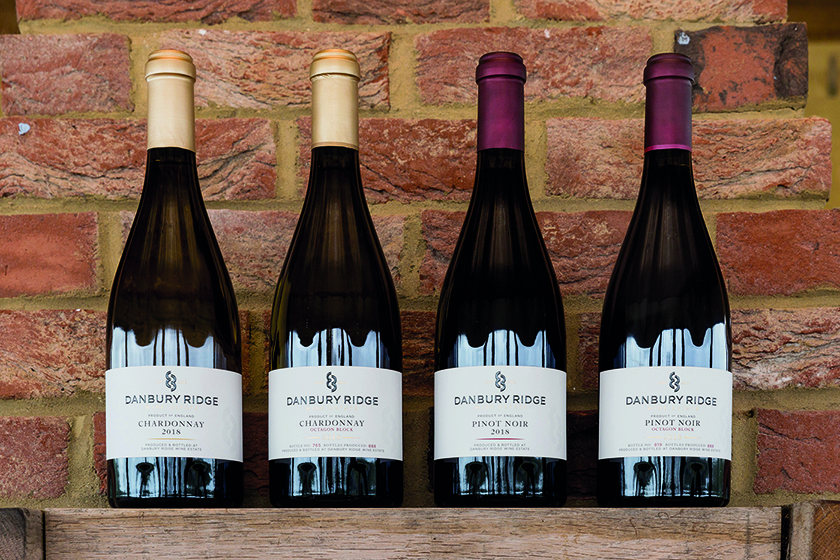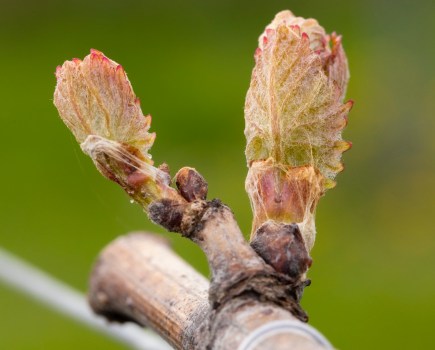The July editor’s column in Vineyard alluded to a wine estate that is poised to shake the UK’s future with its visionary still wines. Situated in probably the most exciting viticultural region of the country, Danbury Ridge Wine Estate in Essex is already astonishing the wine world with its newly released Pinot Noir and Chardonnay vintages – stealing the spotlight from the celebrated regions of Burgundy, Oregon and New Zealand – putting Essex, and the UK, firmly on the world stage with these noble varieties.
Danbury Ridge is family owned and run by Mike and Heather Bunker with their two daughters Janine and Sophie. The family had returned to the village of Danbury after many years in Asia, purchasing the estate before realising its potential for vines. After a feasibility study in 2012 that indicated its suitability, the first vines were planted in 2014, mainly Pinot Noir and Chardonnay, and they were soon producing fruit with a ripeness previously unseen in the UK. These outstanding results prompted serious and ambitious investment and the construction of a state-of-the-art winery for premium wine production – but with inspiration from the small domaines of Burgundy rather than large scale production.
Recognising the value of expertise, the family have selected a small, but outstanding team who support their mission to produce world-class wines. Liam Idzikowski, since his degree in Viticulture and Oenology from Plumpton College, has gained over fifteen years’ experience crafting fine sparkling and still wines worldwide, including Langham and Lyme Bay in the UK. He has been able to help steer this ambitious project from the start. “I had seen this region’s ability to consistently reach very high ripeness levels and was very excited about the flavours that could be achieved with Pinot Noir and Chardonnay. We now have more control and experience in the vineyard and have a winery that is designed to facilitate the production of world class still and sparkling wines. We have had a glimpse of this potential already with the 2018, 2019 and 2020 wines, which are all looking very promising.”
John Atkinson is the resident Master of Wine at Danbury Ridge with a passion for the local geology and terroir. With his extensive knowledge of the wine trade as well, he guides the commercial side of the business, which is run by Sophie and Janine.
Joe Tingey is the estate’s Vineyard Manager and Liam is assisted in the winery by Engineering graduate Hugo Seacombe. “We are a small but fluid team, so we all pitch in. The team also includes my sister who has been involved in the project from the beginning. After a law degree she worked in several wineries around the world before gaining valuable trade experience working for Liberty and Bibendum in London,” said Liam.
With his extensive knowledge of the area’s unique attributes, viticulturalist Duncan McNeill is Danbury Ridge’s vineyard consultant. He also knew the potential of Pinot Noir and Chardonnay for still wine production in the area. “These vineyards frequently achieve ripeness levels of 90 to 100 degrees Oechsle (° Oe) – some of the best in the country! This is partly due to the fantastic growing degree days (GDD) here, which are generally over 1000, and the drier late season. These factors, along with low yielding clones and suitable soils allow for an elongated growing season with long hang times – giving superb maturity and phenolic ripeness,” Duncan added.
“The business model is simple, but strong,” commented Mike Bunker. “Still wines are our primary objective and we focus 100% of our attention on wine production,” he added. “The wine trade in Britain is probably the best in the world, so why not use it. We concentrate on top end restaurants, many with Michelin stars, and sell wine to the consumer through carefully selected distributors. We want to remain premium and exclusive, so export is an important part of the future business model and we are fortunate to have good contacts in Asia – and this also steers our branding,” said Mike.
“We now have 30 acres under vine on the estate and a further 60 acres in estuarine Essex, grown by our associate growers. This will be increased to 70 acres next year. We also work with a vineyard on the North Downs of Kent for our sparkling-base Chardonnay. We only work with growers who are prepared to push quality rather than quantity and produce exceptional fruit – with the shared ambition to produce world class wines,” commented Mike.
Lucky number eight
The branding is sophisticated with understated elegance, refined and distinctive, and subtly incorporates the figure eight – which is a lucky number in Hong Kong where the family lived. With meanings of prosperity, high social status and business success, the number eight features widely at Danbury. “Our logo is an artistic interpretation of an eight, and our bespoke bottles have eight ridges. We wanted to keep the familiar silhouette of a Burgundy bottle but also create something that was very tactile and unique”, explained Janine. “My uncle built an eight-sided ‘Octagon’ pavilion in the 12-acre Octagon vineyard. Our vineyard on the east side of the estate is named after the Norse god Odin’s eight-legged horse, Sleipnir. We have 88 acres in total on the estate. But, that is a coincidence and wasn’t planned,” Janine added.
A geologists joy
John Atkinson has an extensive knowledge of the local geology, the soils and their influence on the vines. “Most of the estate vineyards are on soils formed of gravels over London clay. Although the clay soils can have poor infiltration, they have some unique properties, including a large chemically active surface area to give a high cation exchange capacity – which acts as a great nutrient magnet. They contain a volcanic mineral called smectite, which is also found in Pomerol. Smectite has unusual hydration characteristics, allowing the clay to shrink, swell and crack. The poor infiltration means that any heavy rain at harvest just runs off so there is no berry swell or splitting. The cracking allows oxygen to permeate the soil facilitating root growth and water uptake under drought. Lighter gravel loams soak up the heat beautifully, and in the autumn, along with the woodland shelter belts, provide the warmth needed for excellent berry development and ripeness.
“I think there is such great potential for still wine production in and around the Dengie peninsula which is heavily influenced by the Blackwater Estuary and the River Crouch – it’s a unique place that allows Pinot Noir and Chardonnay to develop their own authentic characters and expression. The wines, made by Liam, reflect this, especially as Duncan and the vineyard team carefully manage the yields,” commented John.
The vineyards
The vineyards are carefully selected to suit Pinot Noir and Chardonnay either for still or sparkling wines, and there are also some small plantings of Meunier for the sparkling blend. The unique mesoclimate, with 1000 GDD or more at Danbury Ridge, the clonal selection and cultural practices such as leaf removal and yield control, all help facilitate a long ripening to develop flavours, along with the cool nights to preserve the gentle acidity. The vines are all trained single- guyot VSP.
The Octagon Block is the most established vineyard on the estate, planted in 2014, on land that was previously an orchard. “The 12 acres are planted with Dijon clone 828 and three German Spätburgunder clones of Pinot Noir. The clones were planted knowing they produce world class Pinot Noir wines and because of their loose bunches and thicker skins, which allow for long hang times. Incredibly though, with experience, we have found the Dijon clones are also very suitable to this region even during wet harvests and we are planting more of these.
These all have loose bunches and thicker skins allowing for long hang times – but avoiding Botrytis. We do not have any Precoce planted. We also have German Chardonnay clones including D 258, which is particularly aromatic and Dijon clone 95,” explained Duncan. Our rootstocks here are SO4, 3309, Rivaria and Binova,” he added.
The 12-acre Sleipnir vineyard was planted in 2017, again with Pinot Noir and Chardonnay. “The clones here include Burgundian INRA 777 and GM 20-13. The Chardonnay clones are INRA 76, 95 and Fr 155 – which gives intense muscat flavours, rather powerful but good in the blend. Most of the rootstocks here are SO4,” said Duncan.
Mike Bunker was a keen polo player for many years but was persuaded to give up his practice ground to make way for the 4-acre ‘polo field’ vineyard. “The free draining sand and gravel meant it was dry enough even in winter to use for polo practice – unfortunately for the ponies this meant it would also be good for vines,” said Mike. The Polo Field is focused for still wine production with a 50:50 split between Chardonnay and Pinot Noir clones. Chablis clone INRA 548 was added to the estate for the first time in this planting.
The winery
The cutting-edge winery must be the envy of any winemaker in the world and Liam has been instrumental from the start in selecting the best equipment to allow for premium wine production.
Standing like proud soldiers, alongside the imposing six tonne Coquard press, are seven round conical shaped Nomblot concrete tanks, with individual thermoregulation. The concrete has a low and slow oxygen permeability that creates the perfect conditions for whole bunch and whole berry cold soaking and fermentation of the Pinot Noir. The Scharfenberger rubber fingered de-stemmer, gently removes the Pinot Noir berries, without crushing ensuring they remain whole and intact for cold soak and the Nomblot tanks are gravity-loaded through hoppers. After fermentation the Pinot Noir is pressed-off its skins with the one-tonne Bucher basket press.
“I aim for minimal intervention, no chaptalisation or de-acidification,” explained Liam. The Pinot Noir cold soak in concrete takes 3-5 days with the thermoregulator set at 4°C but the actual must temperature is around 8-10°C. The cooling is then turned off and the Pinot Noir starts fermenting spontaneously with wild yeast before inoculation with RC212, a Burgundian yeast. The temperature is kept cool (below 24°C) to ensure a long steady ferment which retains freshness for up to 28 days, with gentle punch downs. The wine is then transferred to barrel and the barrel hall warmed to 15°C or 16°C, for the wines to go through MLF,” Liam added.
“After whole bunch pressing in the Coquard, the Chardonnay is fermented in barrel with full solids – where some barrels undergo a spontaneous natural yeast fermentation. The Chardonnay also undergoes MLF – and the barrels that don’t get underway with MLF are seeded with wine from barrels that are.
“The wines can stay in barrels for many months, some up to 18 months, depending how the wine is tasting and its condition, with no battonage. It is then transferred to stainless steel tanks for blending and storage. The wines do not receive any fining and the Pinot Noir does not get filtered. Previously the Chardonnay had a very light filtration but we no longer feel this is necessary. I use a range of French oak barrels including Tonnellerie Francois Frères, Tonnellerie Chassin Père & Fils and Tonnellerie Rousseau. The length of time the wine is able to stay in barrel amazes me,” commented Liam.
The grapes for the sparkling wines are hand harvested and whole bunch pressed in the Coquard, with only the cuvée press fraction used. After cold settling the juice is fermented cool in both stainless steel and old French oak. “We use minimal SO2 and no enzymatic or fining treatments. Depending on the vintage we may do partial MLF or no MLF at all. The reserve wine proportion will depend on the vintage, but typically between 15% and 40% which are aged in oak foudres or unlined concrete tanks,” explained Liam.
“I receive fantastic quality fruit from the vineyard with great composition. Our Pinot Noir typically has a pH of 3.35 to 3.55 with a TA of 5-6g/l and alcohol of 13% or higher after fermentation. The finished Chardonnay is usually around a pH of 3.2 to 3.3 with a TA of 6-7g/l and alcohol average 13.5%. This does take the wines away from what could be considered typical for English wines, but my main aim is to display the power and concentration of flavours that this terrior is capable of,” Liam added.
The winery has its own high-spec laboratory to enable the team to carry out all wine and grape analysis inhouse. This was done in collaboration with oenological lab specialists Dujardin-Salleron.
All bottling, labelling, and disgorging is carried out in house with lines from GAI, supplied by BevTech, and TDD from Oenoconcept.
The wines
Danbury Ridge have wowed the critics with their inaugural still wine releases. The first limited edition 2018 vintages include the Octagon Block Chardonnay and Octagon Block Pinot Noir, along with the 2018 estate Chardonnay and Pinot Noir.
The Sparkling wines
Where the still wines will be terroir and vintage driven from around the River Crouch and Blackwater Estuary, the sparkling wines will be focused on displaying the art of blending, combining rich Essex Pinot Noir and saline Kent Chardonnay. The aim is to keep a focused range of just two blends – one Pinot dominated and one Chardonnay dominated, both will be non-vintage.
Sustainability
Danbury Ridge is very much a family business that is looking forward to providing a legacy for future generations – which already includes Janine’s two young children – and their sustainable principles extend throughout the vineyard, winery and business as a whole.
Danbury Ridge no longer uses herbicides in the vineyards. “We mechanically weed and bud rub during the growing season and have the assistance of Suffolk and Mule sheep to graze the vineyards over winter – with the added benefit of some fertilisation. The vines are mostly low vigour and disease pressure is low, and we use Integrated Pest Management (IPM) across all vineyards. To help build soil nutrients, the grape pomace from the winery is composted and returned to the vineyards and we also use pelleted chicken manure.
Some of the Danbury Ridge vineyards have drip irrigation. “These are not for yield but to keep stomata open and photosynthesis going to maintain ripening in areas where we can get some drought and water-stress,”
explained Duncan.
The winery is designed to be as environmentally sustainable and energy efficient as possible to minimise the carbon footprint. “The above ground cellar is a ‘thermal envelope’ completely insulated and it maintains a stable temperature of between 12-16 °C year-round. The winery has solar panels which supply all the daytime electricity. We also have automatic light sensors to save energy,” commented Janine.
“Reduce, reuse and recycle is our ethos and our wastewater is treated in eco-ponds, or lagoons, installed by Living Waters, so that it is safe to return to the waterways. We collect rainwater also,” she added.
Danbury Ridge are long term supporters of The Woodland Trust and have an ongoing tree planting programme. “We have planted 8,000 trees on the estate including a Jubilee Wood for the Queen’s golden jubilee project,” Janine commented. “We also have a six million litre rainwater reservoir, which supplies water for the vineyards’ drip irrigation – and also includes a fishing lodge for my Dad,” Janine added.
Photos: ©Martin Apps, Countrywide Photographic

